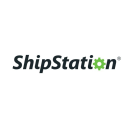On Starting A Leather Shoes Brand With 100% Sales Growth
My name is Wyatt Gilmore and I am the founder of Grant Stone, a Goodyear-welt footwear brand.
Our products focus on business casual, leather shoes and boots. This is a niche market that only sees a few brands making up the majority of the sales in the U.S. There are a lot of reasons for this including the production time and complex inventory (thanks to sizing and widths). This makes it difficult to scale quickly even if one did have the demand.

Most of our customers are looking for a product that can be worn for years and can be resoled at some point. Traditional styling and looks play a role but that usually takes a backseat to the leathers being used and the Goodyear-welt construction (ability to be resoled). They also don’t particularly care to hear about the start-up business or the next new shiny product because their favorite shoes that are in their closet are from older brands with decades of history, and they like that....

Download the report and join our email newsletter packed with business ideas and money-making opportunities, backed by real-life case studies.

Download the report and join our email newsletter packed with business ideas and money-making opportunities, backed by real-life case studies.

Download the report and join our email newsletter packed with business ideas and money-making opportunities, backed by real-life case studies.

Download the report and join our email newsletter packed with business ideas and money-making opportunities, backed by real-life case studies.

Download the report and join our email newsletter packed with business ideas and money-making opportunities, backed by real-life case studies.

Download the report and join our email newsletter packed with business ideas and money-making opportunities, backed by real-life case studies.

Download the report and join our email newsletter packed with business ideas and money-making opportunities, backed by real-life case studies.

Download the report and join our email newsletter packed with business ideas and money-making opportunities, backed by real-life case studies.












